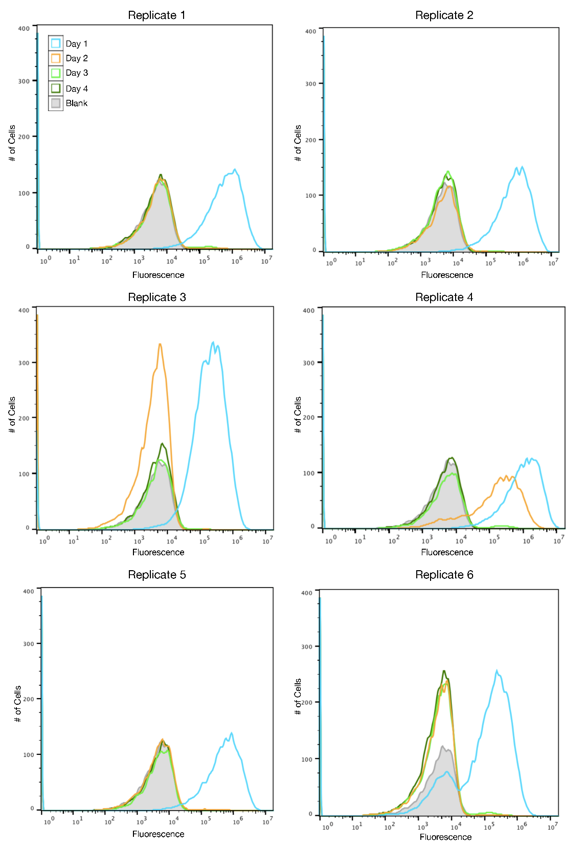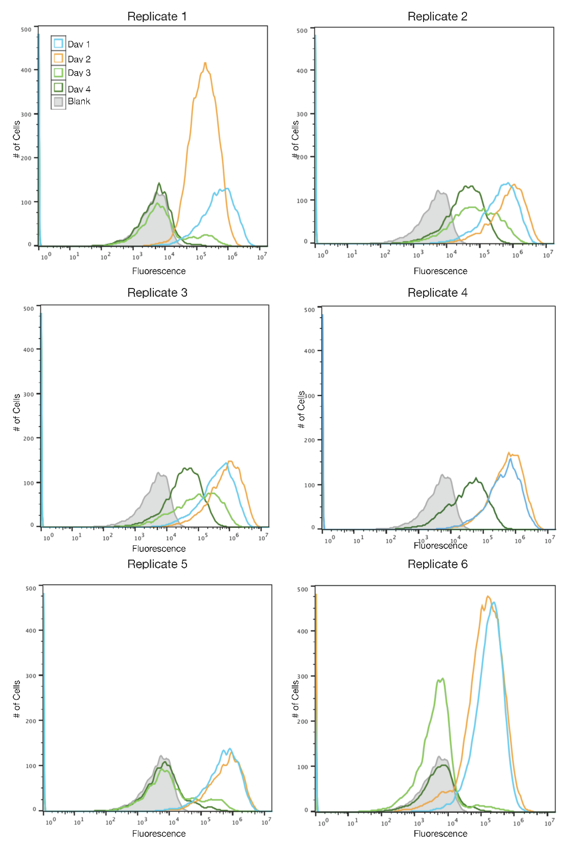Difference between revisions of "Part:BBa K3174008"
Amacaskill (Talk | contribs) |
Amacaskill (Talk | contribs) |
||
| Line 2: | Line 2: | ||
__NOTOC__ | __NOTOC__ | ||
<partinfo>BBa_K3174008 short</partinfo> | <partinfo>BBa_K3174008 short</partinfo> | ||
| − | + | For more information on how this part was conceived and designed, please visit the design tab. | |
This is a redesigned version of the Super Yellow Fluorescent Protein 2 (BBa_K864100) that has had a region that was prone to insertion element mutations altered. This removal of a mutation hotspot resulted in the expression of SYFP2 in culture being maintained for a longer period of time than the original plasmid. | This is a redesigned version of the Super Yellow Fluorescent Protein 2 (BBa_K864100) that has had a region that was prone to insertion element mutations altered. This removal of a mutation hotspot resulted in the expression of SYFP2 in culture being maintained for a longer period of time than the original plasmid. | ||
Revision as of 17:33, 21 October 2019
SYFP2 coding sequence with IS hotspot removed
For more information on how this part was conceived and designed, please visit the design tab.
This is a redesigned version of the Super Yellow Fluorescent Protein 2 (BBa_K864100) that has had a region that was prone to insertion element mutations altered. This removal of a mutation hotspot resulted in the expression of SYFP2 in culture being maintained for a longer period of time than the original plasmid.
Usage and Biology
This part codes for the bright yellow fluorescent protein SYFP2, which has an excitation peak of 515 nm and an emission peak of 527 nm.
Testing and Measurement
Cultures of TOP10 E. coli were transformed with either the original SYFP2 plasmid or the redesign and propogated over four days. Each day a new culture was created using a 1:1000 dilution of the previous day's culture and allowed to grow for 24 hours at 37 C. Fluorescence was measured daily using flow cytometry. The data showed that while the original plasmid stopped expressing fluorescence after one day, the redesigned plasmid retained expression for up to four days.


Sequence and Features
- 10COMPATIBLE WITH RFC[10]
- 12COMPATIBLE WITH RFC[12]
- 21COMPATIBLE WITH RFC[21]
- 23COMPATIBLE WITH RFC[23]
- 25COMPATIBLE WITH RFC[25]
- 1000COMPATIBLE WITH RFC[1000]
